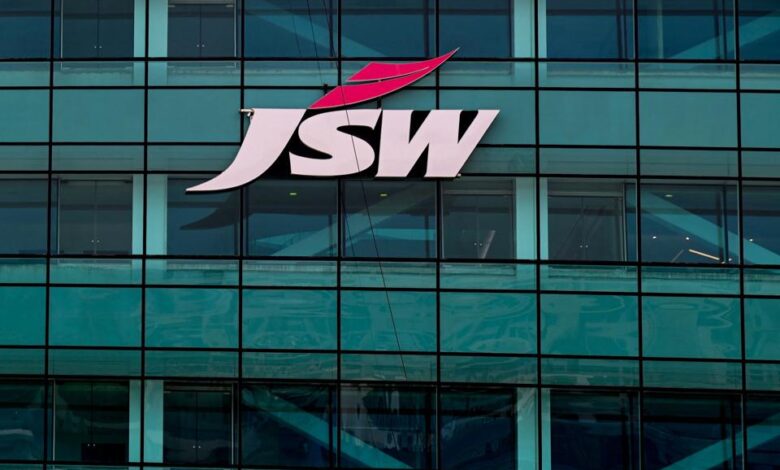
When you think of high-growth sectors in India, cement probably doesn’t make the top of the list. Tech, electric vehicles, and green energy usually steal the spotlight. But cement, a core material for India’s growth, is quietly becoming a powerful story.
And now, JSW Cement, part of the JSW Group led by Sajjan Jindal, is stepping into the spotlight with its ₹3,600 crore IPO. The question is can this green cement company deliver long-term gains?
Let’s find out.
Cement: The Foundation of Growth
India’s infrastructure boom depends heavily on cement. Every skyscraper, road, metro, and bridge begins with it. That’s why cement is often called the “base layer” of industrial growth.
But here’s the truth: the cement business is tough.
It starts with digging limestone out of the ground. The material is then crushed and fired at 1,400°C to form clinkers, cooled, blended with gypsum, and finally ground into cement.
The biggest cost drivers?
- Fuel (30%)
- Freight (25%)
- Raw materials (20%)
Cement is bulky and expensive to transport. That’s why companies build plants near limestone mines and only sell within a 200–300 km radius. It’s not a national-scale business; it grows zone by zone, in clusters.
If demand falls or competition increases in a region, prices can crash. Customers don’t care about the brand, just the price. That leaves little room for error, especially when costs rise.
The JSW Cement Journey
Back in 2006, when others were focusing on headline-grabbing sectors, Sajjan Jindal quietly entered cement. He saw the rising demand for housing and roads and started building JSW Cement from the ground up.
Today, it has become a mid-sized player with a capacity of 21 million tonnes per annum (mtpa), operating mainly in the South, West, and East.
It’s now planning to go public with a ₹3,600 crore IPO:
- ₹1,600 crore will be used for expansion and debt repayment
- ₹2,000 crore is an Offer for Sale (OFS) by early investors like Apollo Global and SBI
Green Cement: The Core Strategy
Cement is one of the most polluting industries. In India, it accounts for nearly 7–9% of CO₂ emissions. But JSW Cement is taking a different approach: it’s betting big on green cement.
Here’s how:
- Cement can be made using various blends like PSC, PPC, PCC, and GGBS
- GGBS (Ground Granulated Blast Furnace Slag) uses steel and iron plant waste instead of limestone
- JSW Cement, thanks to its sister company JSW Steel, has easy access to this slag
This gives it a big edge:
- 84% market share in GGBS
- 70% of its cement volumes come from green variants
- Claimed to have the lowest CO₂ intensity in the Indian cement industry
Green cement is cheaper to make, better for the environment, and prepares the company for upcoming sustainability regulations.
The Financial Reality Check
But being green doesn’t automatically mean being profitable.
Here’s how the numbers look:
- Revenue has stayed flat since FY23 at around ₹6,000 crore
- In FY24, it posted a profit of ₹131 crore
- But in FY25, it posted a loss of ₹164 crore
So, what went wrong?
1. Weak pricing power
In FY25, JSW Cement’s realisation per bag was ₹225, compared to the industry average of ₹263. Because it’s still establishing itself in key regions, it couldn’t charge premium prices.
2. High input costs
Fuel and freight costs rose sharply. But because of the low pricing power, JSW couldn’t pass these on to customers.
3. Demand didn’t meet expectations
The cement market in the South and West didn’t grow as expected. This led to a drop in realisation and utilisation.
4. Big spending during expansion
JSW Cement is expanding aggressively. It’s building plants, entering new regions, and investing in logistics all of which are capital-intensive, and returns come only years later.
The IPO Funds: Where Will the Money Go?
₹800 crore of the IPO money will be used to set up a new plant in Nagaur, Rajasthan JSW Cement’s first entry into North India.
But that plant won’t start receiving funds until FY26 and FY27. So to keep construction on track, the company has already borrowed ₹2,100 crore from Axis and Union Bank at an interest rate of 8.8%.
Even after the IPO, total debt remains high at ₹6,122 crore.
And that raises another concern if demand doesn’t rise fast, or pricing remains weak, interest payments could become a heavy burden.
Return on Equity and Utilisation
- JSW Cement’s Return on Equity (RoE) is just above 2% much lower than peers
- Capacity utilisation fell from 67% in FY24 to 63% in FY25
- The industry average stands at 72%
Let’s simplify that with an analogy:
“If your kitchen can cook 100 meals a day, but you’re only serving 60, you’re not using your assets fully.”
That’s what’s happening at JSW Cement: too much capacity, not enough demand.
Valuation: What Are You Paying For?
Since the company posted losses, traditional profit-based valuation doesn’t apply.
Instead, analysts use EV/EBITDA, which compares enterprise value to operating profit.
- At ₹147 per share, the IPO values JSW Cement at ₹20,000 crore
- That’s a 23x EV/EBITDA multiple, in line with the industry
- But keep in mind peers have stronger profits and bigger scale
Also, promoters recently bought shares at a much lower price, which may raise concerns for retail investors paying the premium.
Summary Table
| Metric | Details |
| IPO Size | ₹3,600 crore |
| Fresh Issue | ₹1,600 crore |
| Offer for Sale (OFS) | ₹2,000 crore |
| Revenue (FY25) | ₹6,000 crore (flat from FY23) |
| FY25 Profit/Loss | ₹164 crore loss |
| Avg. Realisation per Bag | ₹225 (vs industry average ₹263) |
| Green Cement Share | 70% of total volumes |
| GGBS Market Share | 84% (India’s largest) |
| Capacity Utilisation (FY25) | 63% (vs industry avg. 72%) |
| Total Debt | ₹6,122 crore |
| RoE | ~2% |
| Valuation Multiple (EV/EBITDA) | 23x |
| Promoter Share Price | Bought recently at lower value than IPO offer |
Final Thoughts: Is It a Good Bet?
JSW Cement is playing the long game.
It’s positioning itself as a green cement leader, backed by JSW Steel, and entering high-demand states like Rajasthan, UP, MP, and Punjab.
It has the vision, strategy, and supply chain to scale up but the path is far from smooth.
- Debt is high
- Margins are under pressure
- Expansion will take time to pay off
If you’re a long-term investor, betting on India’s infrastructure story and sustainability trends, this IPO may be worth a deeper look.
But don’t expect quick returns. This is a slow-moving, cyclical business where execution, not hype, drives growth.
Disclaimer: This blog is for informational purposes only and does not constitute investment advice. Always consult a financial advisor before investing.
BY-Rinal Rathi




